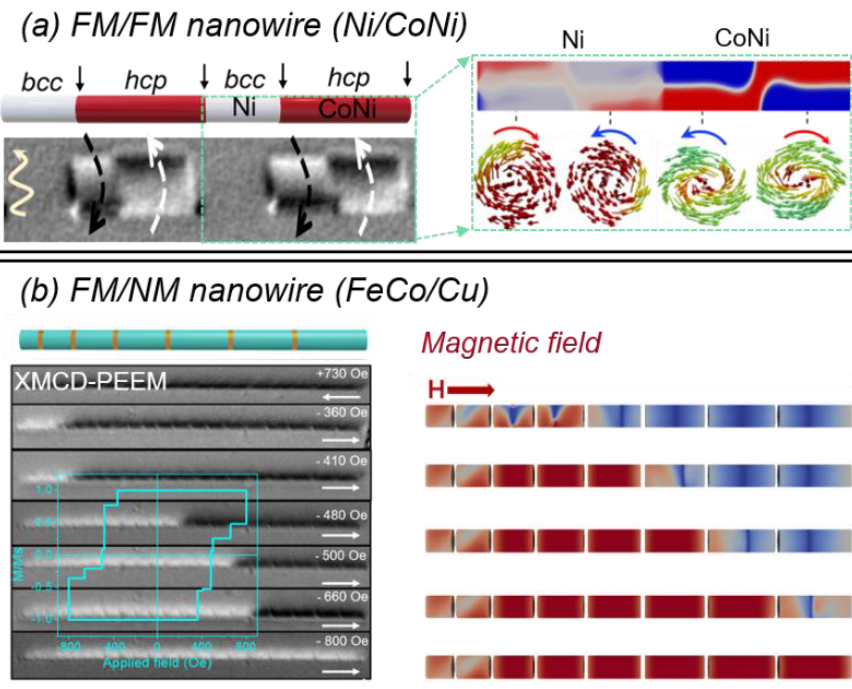GENERAL SEMINAR: Dr. Cristina Bran, Institute of Materials Science of Madrid
One of the promising nanomagnets studied in the last years are the nanostructures with curved geometry where novel physical effects comprising topologically non–trivial magnetic structures are involved. They show great potential to be use as domain wall (DW) carriers for memory and sensing applications. One of these nanostructures, cylindrical nanowires, offer multifunctional capabilities with energy–efficient responses to electric, magnetic, magneto–elastic or thermal stimuli. Their circular symmetry determines novel spin phenomena and magnetization dynamics related to topology. Multiple topologically non–trivial magnetization structures such as Bloch–point domain walls, helical magnetic configurations, vortices, or skyrmion tubes are the consequences of cylindrical curvature and geometrical confinement [1,2].
This talk presents different ways to control the magnetization configuration and its dynamics through the geometry and magnetocrystalline anisotropy in cylindrical nanowires. The diameter modulations change the typical single–domain state present in cubic nanowires, providing the possibility to confine or pin circular domains or domain walls in each segment. The control and stabilization of domains and domain walls in cylindrical wires can be also achieved in multisegmented structures by alternating magnetic segments of different magnetic properties (producing alternative anisotropy) (Fig. 1 (a)) or with non–magnetic layers (Fig. 1 (b)). The results point out the relevance of the geometry and magnetocrystalline anisotropy to promote the occurrence of stable magneto–chiral structures and provide further information for the design of cylindrical nanowires for multiple applications

Fig. 1. XMCD-PEEM images (left side) and micromagnetic modeling (right side) of magnetic configurations
of (a) multi-segmented Ni/CoNi nanowires and (b) ratchet-like FeCo/Cu nanowires.
[1] C. Bran et al., ACS Nano 2018, 12, 6, 5932
[2] C. Bran et al., ACS Nano 2021, 14,12819; Nanoscale 2021, 13, 12587.